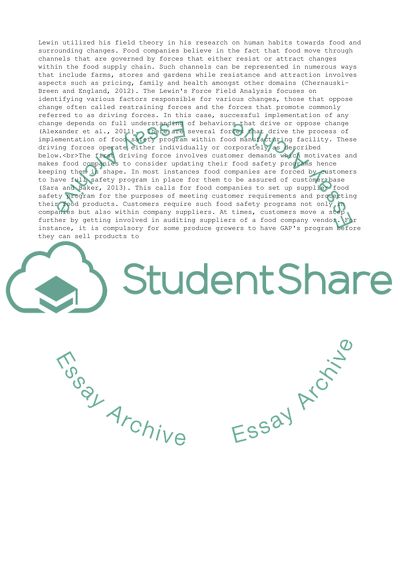Cite this document
(“Implementing Food Safety Programs Using the Kurt Lewin Forces Theory Research Paper”, n.d.)
Implementing Food Safety Programs Using the Kurt Lewin Forces Theory Research Paper. Retrieved from https://studentshare.org/business/1653811-implementing-food-safety-programs-using-the-kurt-lewin-forces-theory
Implementing Food Safety Programs Using the Kurt Lewin Forces Theory Research Paper. Retrieved from https://studentshare.org/business/1653811-implementing-food-safety-programs-using-the-kurt-lewin-forces-theory
(Implementing Food Safety Programs Using the Kurt Lewin Forces Theory Research Paper)
Implementing Food Safety Programs Using the Kurt Lewin Forces Theory Research Paper. https://studentshare.org/business/1653811-implementing-food-safety-programs-using-the-kurt-lewin-forces-theory.
Implementing Food Safety Programs Using the Kurt Lewin Forces Theory Research Paper. https://studentshare.org/business/1653811-implementing-food-safety-programs-using-the-kurt-lewin-forces-theory.
“Implementing Food Safety Programs Using the Kurt Lewin Forces Theory Research Paper”, n.d. https://studentshare.org/business/1653811-implementing-food-safety-programs-using-the-kurt-lewin-forces-theory.


